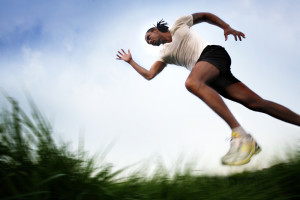 Perth chiropractor, Dr Adam Rocchi, commonly sees runners in his practice. We sat him down and got his top tips for avoiding injury and improving your performance.
Perth chiropractor, Dr Adam Rocchi, commonly sees runners in his practice. We sat him down and got his top tips for avoiding injury and improving your performance.
1. Be consistent in your running.
People running 10kms on the weekend with nothing during the week are more likely to injure themselves than someone who is running 4kms several times a week. The stress and strain of the longer run will be greater when your body isn’t used to it.
2. Rest.
Recovery time is important in training. Pushing your body involves trauma to muscles, tendons and ligaments. It’s simply the nature of what training does. In fact muscle soreness the day after training is the result of inflammation within the muscles.
The body needs time to institute healing processes. In fact it takes 6-8 weeks to fully remodel connective tissue like ligaments after an injury! While you don’t have to wait that long between training sessions, allowing time to let inflammation settle and metabolic waste products to clear will help.
3. Listen to your body.
Carrying on from point two, if you start to experience niggles and pains beyond post treatment soreness, stop running and seek advice. If can be tempting to push through the pain, but doing so increases the chance of injury.
4. Graduate your training.
The build up to a longer run needs to be just that – a build up. Longer events such as half and full marathons obviously stress the body in ways it doesn’t usually experience. This can bring out injuries that you otherwise don’t notice.
As an example, if someone is carrying a low-grade nerve irritation in their back. As their training increases and the sciatic nerve roots are rubbed backwards and forwards repeatedly, those nerve roots may start to get irritated. It’s not unusual at all for people to bring out injuries as they push themselves to new levels. Go with point three and listen to your body.
5. Remember that the absence of symptoms doesn’t equal the lack of a problem.
One of the biggest things Dr Rocchi ( chiropractor ) finds is many people carry some sort of neuromuscular dysfunction, regardless of whether they have symptoms or not.
For example, it’s commonly known that weakness in the vastus medialis – the inside part of the quadriceps – will result in the knee cap tracking outward causing inflammation. This is usually paired with tightness in the vastus lateralis – the outside of the quadriceps – and tightness in the iliotibial band.
Often though people can have weakness in a small muscle in the back of the knee called the popliteus, which can be weak. The action of the popliteus is to unlock the knee from full extension by medially (internally) rotating the tibia (the lower leg bone). It has a big impact on the stability of the femurs (the thigh bones) in the knee joint, controlling sheering forces over the knee with running (particularly down inclines) and stopping suddenly.
Using the Trigenics system of analysis and treatment, Adam tries to identify weak and tight muscles in the legs, core and low back of runners, and using adjustments designed to affect the tone of the muscles, attempts to “reset “ those weak or tight muscles.
If you’d like some help with improving your running performance, please call the practice (08) 61508783 to arrange an appointment.


No comments yet.